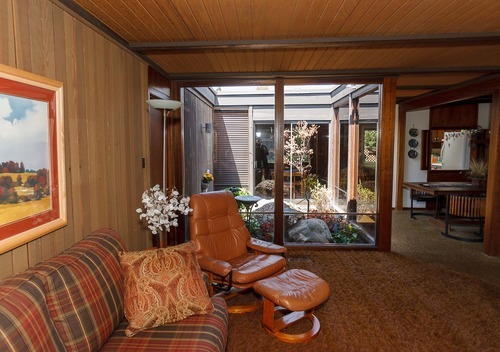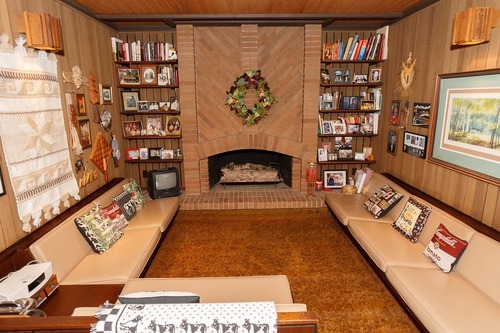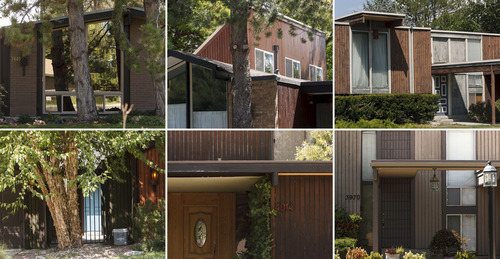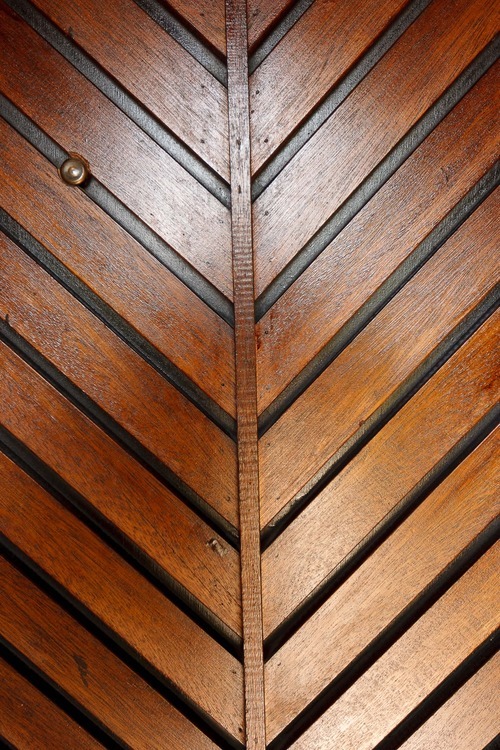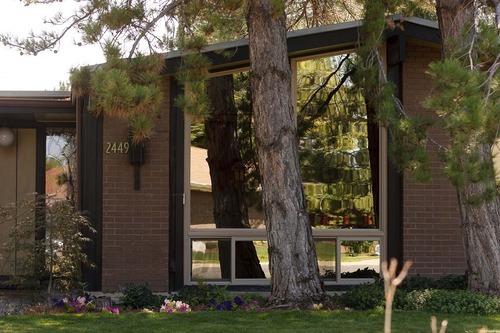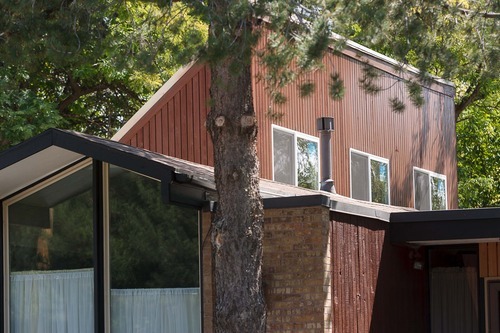This is an archived article that was published on sltrib.com in 2012, and information in the article may be outdated. It is provided only for personal research purposes and may not be reprinted.
West Valley City • Utah architect Ron Molen might be retired, but for those who live in the interesting homes he designed more than 45 years ago for the Westshire neighborhood in the center of the Salt Lake Valley, his legacy is celebrated daily.
"Every morning I think how lucky I am to be waking up in such a beautiful house, and every time I go away, I am thankful to come home to a place I love so intensely," wrote homeowner Alice Reis in a 2008 letter to Molen. "I know that real estate people preach 'location, location, location' but our mantra has become 'architect, architect, architect.' Your houses have stood the test of time and have retained their charm and their individuality."
Reis and her husband Bob have lived in the 160-home Westshire neighborhood just south of the Valley Fair Mall for 12 years. Rich Carter, who sold the homes for contractor Vern Hardman when prices began at $24,000 in the '60s has lived in his for 39 years. Long-time resident Judi Morrell described herself as "an Avenues brat who never envisioned moving out to West Valley" but fell in love with the neighborhood when she attended a home show more than 35 years ago.
The well-kept homes are definitely not the same-looking tract variety seen in so many modern subdivisions. That's why some have been featured in Better Homes and Gardens magazine and the entire neighborhood was included on a Utah Heritage Foundation tour a few years ago.
Though most use cedar wood, some have brick facades. A few, like the Reis home, have vaulted ceilings. Others have flat roofs.
Carter's home features an inside atrium, built-in beds, an aggregate cement floor and a sunken conversation area near a fireplace where he, his wife and five children often gathered.
"The idea was that you have a natural kind of primitive gathering place," said Molen, now in his 80s, who lives in Sugar House. "That was usually around a fireplace. That goes back a long time, where people would gather around a fire. Even though that doesn't sound like much, a lot of houses don't have a great place for a family to gather. If they don't have a place, it might not happen."
Molen's homes included bits of whimsy. Some had a fire pole in addition to stairs. One had a slide next to basement stairs. Carter pointed to a bed hidden in a look nook between the garage and a family room that would be impossible to see if you didn't look.
"What I noticed in the zoo was that chimps have much more stimulating environments than homo sapiens," said the architect. "We tried to create a little more stimulating environment for kids. We raised the bed off the ground four feet and put a hobby closet underneath. A small kid could fit under there and do projects. The room didn't end up a mess."
Molen praised Hardman and his Research Homes for having the vision to build quality homes with a more unique look.
"What we wanted to do is to provide well designed homes that were architectural and not builder-designed," he said. "Builders tend to copy each other. We wanted to do something unique...We came up with the idea of creative family living. We designed houses that were interesting for basic family living. That doesn't sound terribly unique. A lot of houses were designed to be flashy and a symbol of wealth. That was not what we were after at all."
Driving through the well-kept neighborhood filled with mature trees and homes that all look unique, one thing you don't see is many "For Sale" signs. People buy one of these homes and stay in them. A neighborhood association publishes a blog and holds an annual fundraiser to maintain flowers and signs off 2700 West that lead into the development.
The homes are designed to stand the test of time. Cedar requires stain about every 15 years or so, but holds up against the elements. The wood design would be stronger in an earthquake and, sitting in the Reis' living room, the quiet is the first thing that strikes you.
Anyone who thinks that all subdivisions are created equal needs to pay a visit to Westshire.
Twitter: @tribtomwharton




